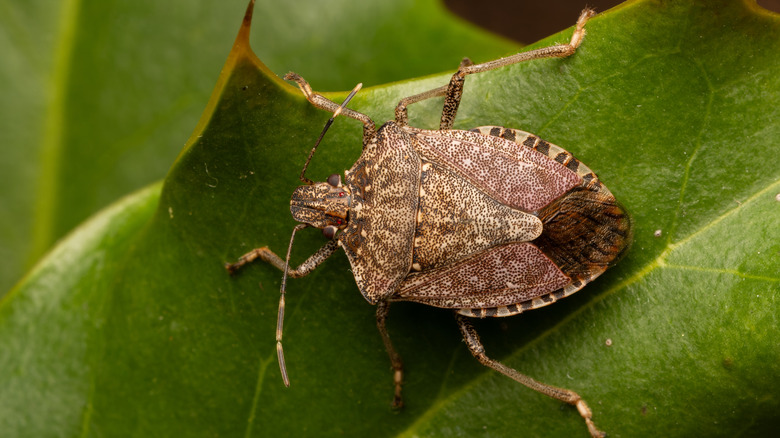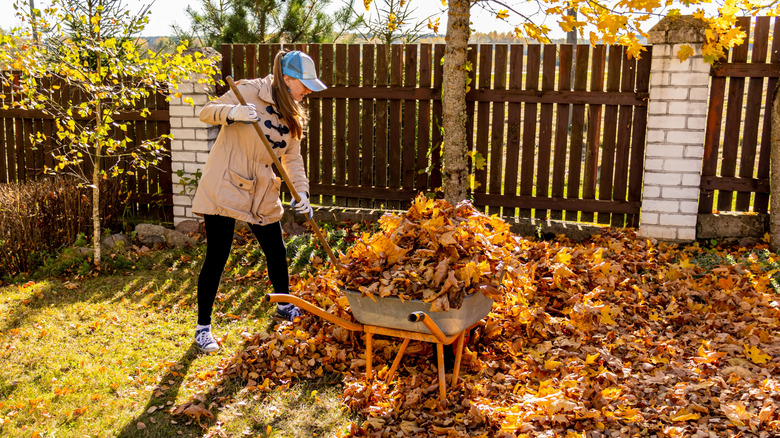Why Stink Bugs Are Still A Threat To Your Winter Garden (And What To Do About It)
Most of us can admit that bugs make us cringe — and even more so when we discover a group of them in our personal space. Unfortunately, their ability to squeeze through the tiniest cracks gives them free reign to any place they please, including our gardens. One common garden pest is the stink bug, which can be green, yellow, gray, or brown. Their distinct angular, shield-shaped bodies, usually about 1/4 to 1 inch long, make them recognizable. Another distinction — one you don't want to experience — is its odor that is released when it is squashed or feels threatened, hence the name.
Unattractiveness aside, these bugs are a particular nuisance to gardeners. They target fruit trees (like apple, peach, and cherry) and feast on corn, tomatoes, and eggplant, among others. They attack and poison plants or suck their sap, causing plants to wilt and die. Stink bugs can also leave blemishes on crops, ruin young shoots and flowers, or impact a tree's ability to produce fruit.
During the winter, when stink bugs are taking shelter from cooler weather, you may find them congregating in your doorframes or under your bed (shudder!). But this doesn't mean that your yard is safe from these invasive creatures. While your garden is dormant, stink bugs are overwintering in leaf piles, tree bark, firewood, and dead weeds — waiting out the cold until they can once again attack your plants. Thankfully, there are ways to get rid of or kill stink bugs in your garden without extensive effort on your part.
How to keep stink bugs out of your garden
From September through October, stink bugs start looking for places to overwinter. The best way to deter them from your garden is to make it as uninviting as possible, starting in late August before the pests start their search. Even though it's tempting to simply leave your yard alone during the winter, keep your garden tidy by clearing out weeds, leaf debris, and old fruit.
Another method is to attract their predators, such as Northern cardinals. These birds stay local during the winter, opting not to fly south like many other bird species. They're found primarily in the Eastern U.S., stretching north to lower New England, but have been sighted as far west as Southern Arizona. Cardinals enjoy a diet of seeds, fruit, and insects, so fill feeders with the best type of bird seed for attracting cardinals to your yard in hopes that they'll also find stink bugs hiding away.
You can also pit insects against each other by attracting samurai wasps (Trissolcus japonicus), typically seen in Northeastern U.S. and the West Coast. These wasps have been found to be one of the most effective natural predators against brown marmorated stink bugs. It lays its own eggs inside stink bug eggs, killing the pest before it can even hatch. Since these beneficial predators feed on nectar and pollen, stock your garden with plants that attract wasps — buckwheat, sweet alyssum, basil, cilantro, and dill are favorites of the samurai wasp — during warmer seasons to keep the stink bug population under control before winter.

